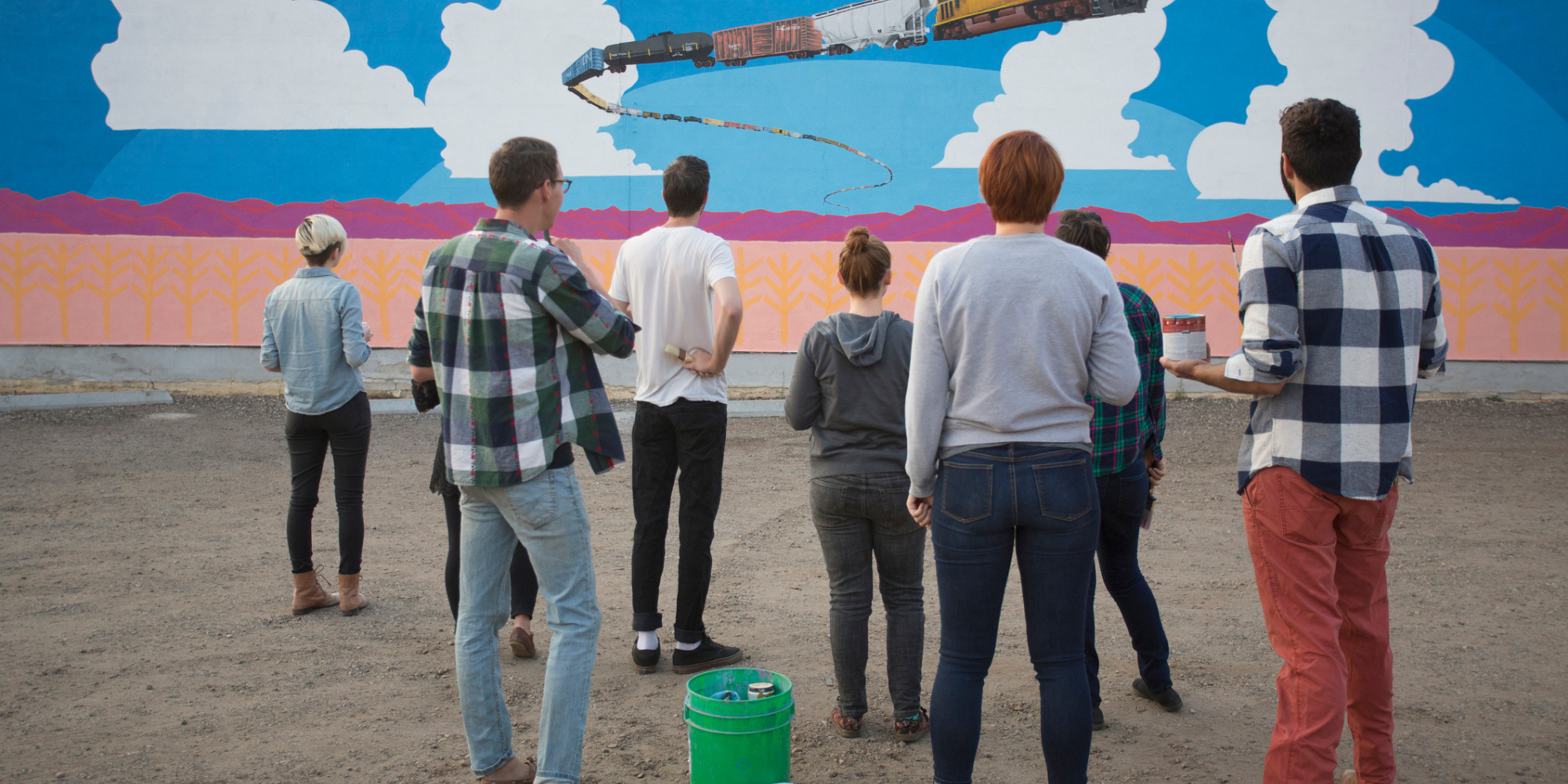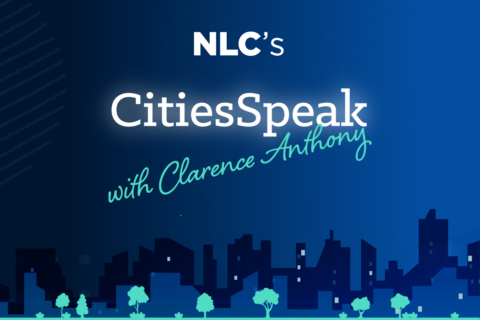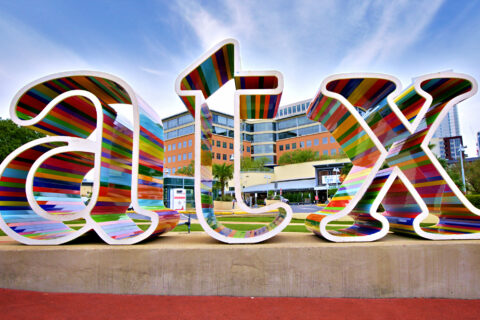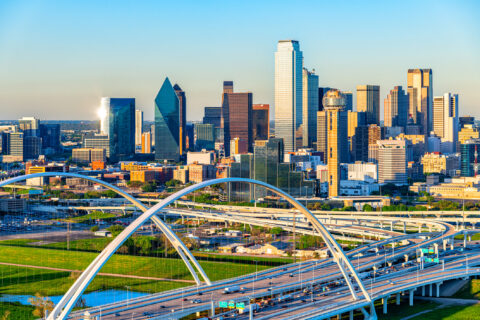The American Rescue Plan Act (ARPA), signed into law in 2021, provided $350 billion in Coronavirus State and Local Fiscal Recovery Funds (SLFRF) to state, local, territorial and Tribal governments. Seizing an opportunity to fund innovative solutions to local challenges, local governments across the country are using SLFRF to rebuild the artistic sector and strengthen community economic development, public spaces, health, and wellbeing.
Notably, some local governments have allocated a proportionally large amount of their SLFRF to their arts sectors, and in particular their local arts councils. The below share why the City of St. Louis, MO and the City of Winston-Salem, NC have championed their arts communities in the wake of the COVID-19 pandemic.
For more information on how cities have used SLFRF for the arts, read NLC’s ARPA Fact Sheet: Leveraging the Arts.
St. Louis, Missouri: $10.6 million
The Regional Arts Commission of St. Louis (RAC) is set to receive $10.6 million in American Rescue Plan Act funding as a result of the passage of Board Bill #66, which received unanimous support from the City of St. Louis’ Board of Aldermen. At the time of the announcement, according to St. Louis Mayor Tishaura Jones, it is the third-highest amount of ARPA funds allocated by a U.S. city to the arts. This $10.6 million will be used to support the arts within the City of St. Louis.
Arts, culture, and creativity are big business in the St. Louis region. Pre-pandemic research estimates total economic impact from this sector to be nearly 600 million dollars—larger than all regional sports activities combined. The sector includes non-profit cultural organizations that generate over 19,000 FTE jobs; numerous commercial entertainment venues; and more than 15,000 individual artists across artistic disciplines. In addition, arts and culture are a fundamental component of healthy communities. Cultural workers are valued partners in addressing pressing challenges in community development, neighborhood revitalization, public and mental health, public safety, place making, and infrastructure.
The arts in St. Louis were among the first industries to go down during the pandemic and among the last to come back up. When the arts struggle, so do other local businesses – retail, hotels, restaurants, tourism, etc. Per the US Census Bureau’s Small Business Pulse Survey, “Arts, entertainment, and Recreation” businesses were second only to “Accommodations and Food Services” in “large negative effect” and “severe impact” due to the pandemic.
Just as crucial, the ability to connect with other people through the arts was taken away during the COVID-19 pandemic. The arts are scientifically proven to bolster a person’s mental health. The arts often serve as the heart and soul of a community. Celebrating 40 years of service, RAC was founded in 1985 to support St. Louisan’s belief that the arts are not a luxury but rather an essential benefit to daily life.
This landmark funding is the result of an outpouring of community support and action. In a letter to city and county officials, more than 100 area arts leaders advocated for 5% of the federal relief funds to be allocated to arts institutions. These institutions suffered significant lost revenue after they had to shut their doors to prevent the coronavirus from spreading. Hundreds of St. Louis residents also voiced overwhelming support for the arts, listing them as a top priority in citizen surveys and in town halls regarding ARPA funding.
St. Louis Mayor Tishaura Jones, Alderman Dan Guenther, Alderwoman Shameem Clark Hubbard, and Alderwoman Marlene Davis led the legislative effort that gained support from the elected officials that co-sponsored and approved Board Bill #66. RAC’s Commissioners and team members supported the 18-month long efforts, including incredible advocacy from RAC 2022 Board Chair Cheryl D.S. Walker and RAC External Relations Senior Manager Nichole Belford.
As the largest public funder of the arts in St. Louis, RAC is eager to get to work putting resources in the hands of artists and arts organizations through the “ARPA for the Arts” program, that includes grants and professional development opportunities as well as robust community engagement and outreach that will advance the region’s recovery. Of the $10.6 million that has been entrusted to RAC for three years beginning in 2023, RAC plans to distribute more than 50% of that amount in the first year alone.
Winston-Salem, North Carolina: $1 million
The Arts Council of Winston-Salem & Forsyth County, in partnership with a group of local arts, public health, and municipal agencies, has received $1 million in ARPA funding from the City of Winston-Salem to support the One Nation One Project arts and health initiative (a partnership of NLC).
The City of Winston-Salem is a City of Arts and Innovation. It is the city’s priority to work closely with community arts organizations to help strengthen the local arts economy. By directing these funds in support of local participation in One Nation One Project, the City hopes to help bring the arts to lower-income sectors of the community and be an asset in improving community health and resilience in partnership with health providers. This large-scale arts and wellness project will deliver evidence-based benefits related to improving health outcomes through art, strengthening social bonds in the community, and providing new, equitable employment opportunities.
According to Mayor Pro Tem D.D. Adams, the significance of this allocation is that the funding comes from an equity mindset about providing access to the arts and quality healthcare in marginalized communities. This project is designed to be provided in qualified census tracts where many residents live below the federal poverty line. Through the local participation in the One Nation One Project arts and health initiative, this funding is directed to the communities in greatest need and will be part of a larger initiative to redevelop and reinvigorate parts of the city in greatest need. While the City of Winston-Salem has funded other public arts projects in low-to-moderate income areas, this project will be part of a catalyst for opportunity and ideally help remove barriers to healthcare access and economic mobility.
The local site team for this project is based upon a partnership between the City of Winston-Salem, Arts Council of Winston-Salem & Forsyth County, Thomas S. Kenan Institute for the Arts at UNCSA, Forsyth County Department of Public Health, and United Health Centers (the local community health center). Additional partners will be named over time. This ARPA-funded projects will create opportunities to holistically improve community wellness through the integration of arts and health. The City of Winston-Salem is excited to be part of a project that will bring public arts and its ancillary benefits to marginalized communities.
ARPA Arts Investments across the Country
Explore how other cities are using SLFRF for arts and culture using the dashboard below.
ABOUT THE AUTHORS
Vanessa Cooksey is President and CEO of the Regional Arts Commission of St. Louis.
Nick Dunne is Public Information Officer and LGBTQIA+ & Arts Liaison for the City of Saint Louis, MO Mayor’s Office.
Chase Law is Present and CEO of the Arts Council of Winston-Salem & Forsyth County.
D.D. Adams is Mayor Pro Tempore of the City of Winston-Salem, NC.








